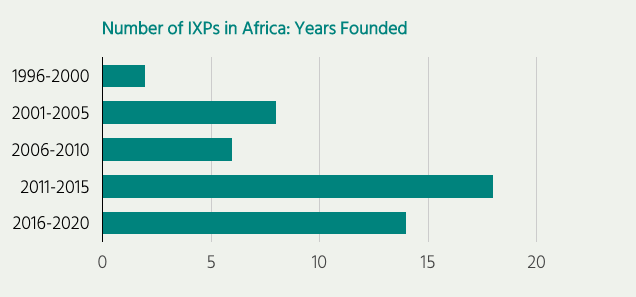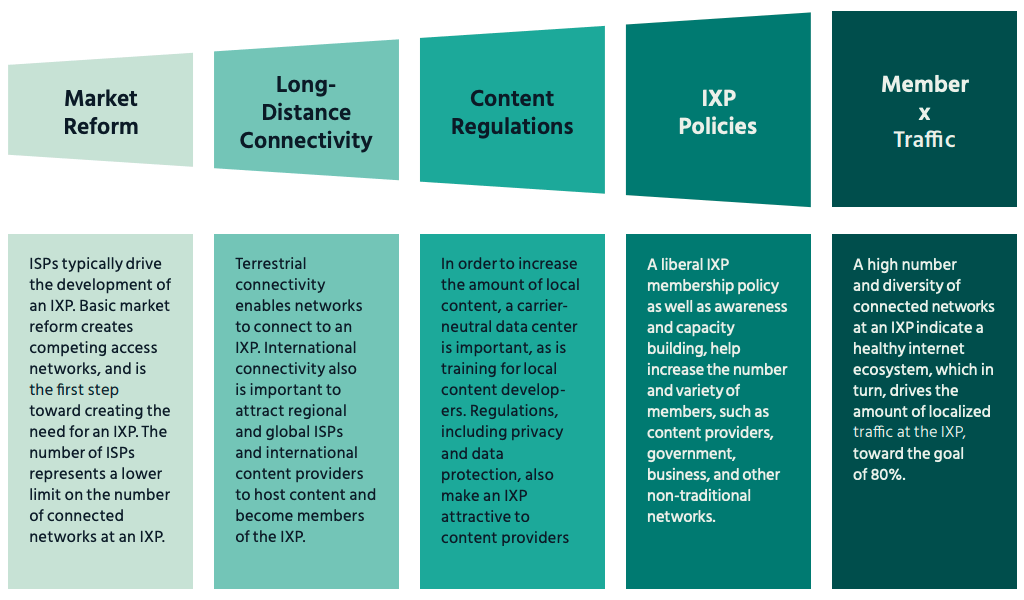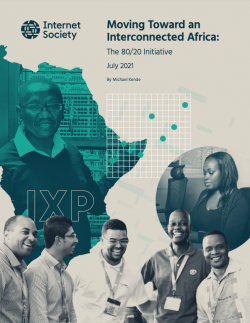In 2010, the Africa Internet technical community embraced an ambitious vision to have 80% of all Internet traffic locally accessible with only 20% being sourced internationally by 2020.
This vision was tracked through an initial study conducted in 2012 on Kenya and Nigeria to establish the baseline from two of the second most advanced peering ecosystems, besides South Africa which is an outlier. The same countries were studied in early 2020 to assess the progress.
The question is, was the vision achieved or not? What changed across the continent during this period and what lessons can we draw from this initiative going forward?
How a Community’s Response to a Goal Led to the Growth of IXPs across Africa
This report shows there is a boom in Africa’s Internet exchange points development in the last 10 years, making the continent’s Internet affordable, faster, better performing and more local.

What Has Changed?
| 2010 | 2020 | |
| Number of IXPs | 19 | 46 |
| Countries with 70+% localized traffic | 1 (South Africa) | 3 (Kenya, Nigeria, and South Africa) |
| IXPs with 30+ networks | No data | 10 (in 5 countries: Ghana, Kenya, South Africa, Tanzania, and Uganda) |
| Content Delivery Networks (CDNs) | No data | 33 countries have at least 1 international CDN |
| Content hosting for data centres | Low demand | High demand |
What Next?
Though half the countries in Africa have IXPs, a great majority are yet to boost the levels of Internet traffic that is locally exchanged from 20% to 80%. The following enablers can foster change:

Find Out More
- Download the Full Report (July 2021)
- Explainer: What is Internet Peering? (June 2020)
- Explainer: What is an IXP? (June 2020)
- Explainer: What is Eighty For Africa? (June 2020)
- Video Explainer: How Internet Exchange Work? (produced by Euro-IX, May 2014)
